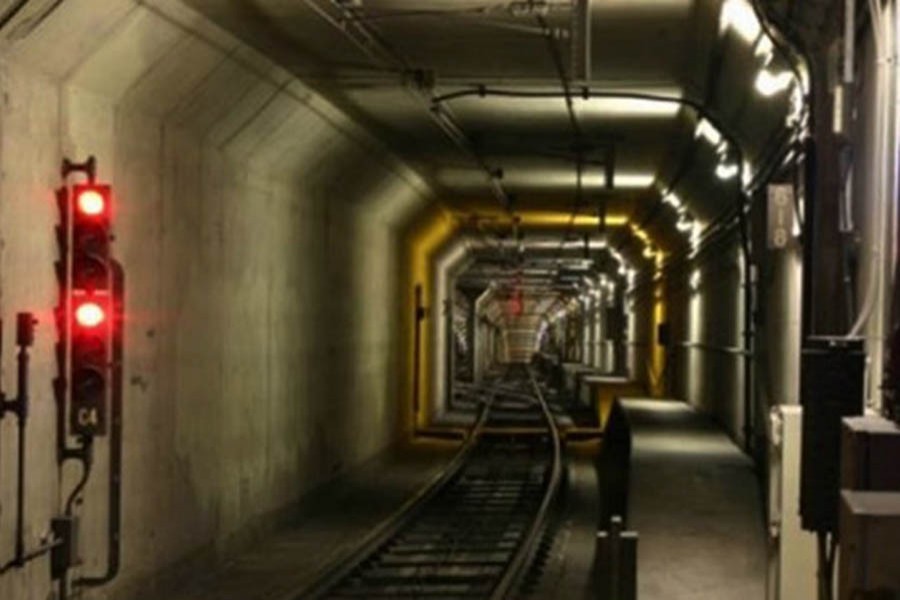The development of a 258-kilometre subway network on 11 routes in Dhaka city will take 50 years to address the growing traffic needs of 50-million residents.
A draft feasibility study on the project, submitted during a seminar on Wednesday, proposed to develop the entire network in three phases until 2070.
The network will ensure better connectivity and coverage of city areas than the rail and bus transit system together.
Six mass rapid transit (MRT) lines and two bus rapid transit (BRT) lines are underway in Dhaka and its nearby areas under a 25-year revised strategic transport plan by 2040.
The subway network, mooted beyond the strategic plan, is the first infrastructure proposed for implementation over the next 50 years.
The Bangladesh Bridges Authority (BBA) shared the study at a city hotel with stakeholders where road transport and bridges minister Obaidul Quader was virtually present as the chief guest.
Bridges division secretary Mohammad Belayet Hossain chaired the session which was addressed, among others, by road transport ministry's parliamentary standing committee chairman Abul Hossain Babla, Gazipur city mayor M Jahangir Alam and Spanish envoy in Dhaka.
BBA chief engineer Quazi Ferdous and team leader Thomas Martin of Spanish firm TYPSA presented the key features of the subway project and its proposed network.
They said the first-phase work to develop 127 kilometres of the network by implementing four routes was planned for completion by 2030.
Welcoming the draft on the subway network, Mr Quader stressed the need for its better coordination between other ongoing infrastructure projects like MRT lines and checking overlapping.
He said the government had planned to divide city dwellers' mobility on the top and bottom surfaces of the city to utilise underground space.
This will help improve traffic system significantly, Mr Quader added.
Secretary Mr Hossain said although the subway development was a big project, its challenges in execution could be fixed through coordination between all other development projects and planning.
The BBA made the move for feasibility of the subway following a directive from the prime minister at a meeting on mitigation of traffic congestion in Dhaka city in 2016.
It appointed TYPSA (Technica Y Proyectos SA) in association with PADECO of Japan and BCL Associates, KSC and BETS of Bangladesh to do the study on a 90-kilometre route.
Later, the consultants in an interim report highlighted the development of a full subway network assessing 239-km area and started the study after revising the project proposal in November 2019.
They finally started the study in March 2020 after the project's approval by the cabinet committee on government purchase on its variation.
Final feasibility is scheduled to be submitted next June.
Mr Ferdous said B, O, S, and T of the 11 routes named alphabetically would be implemented in the first phase.
The building cost could be assessed after the detailed design, he said, adding that an estimated $8.0 billion would be required for 30-km subway network development.
The engineer said the entire network would be built underground and much below the existing buildings and infrastructure through tunnel boring machines.
It would be a problem with the already developed infrastructure and below-the-surface utilities.
According to the study, 30.5-km 'B' route has been proposed to link between Gabtoli-Bholabo union establishing 26 stations.
The route 'O' will have 27 stations from Jhilmil to Tongi junction having a length of 29.38 kilometres.
The subway from Keraniganj to Sonapur will have the 'S' line having 18 stations in the 19.5-km length.
The 'T' route has been proposed from Jahangirnagar University to Narayanganj with 44 stations in the 47.54-km line.
Replying to queries, BBA officials said the study was done taking into account construction risk mitigation and interchanging ability and interoperability of MRTs, BRTs and train services.
According to the team leader, MRT network has poor connectivity as high density and many points were not covered while selecting stations and lines.


